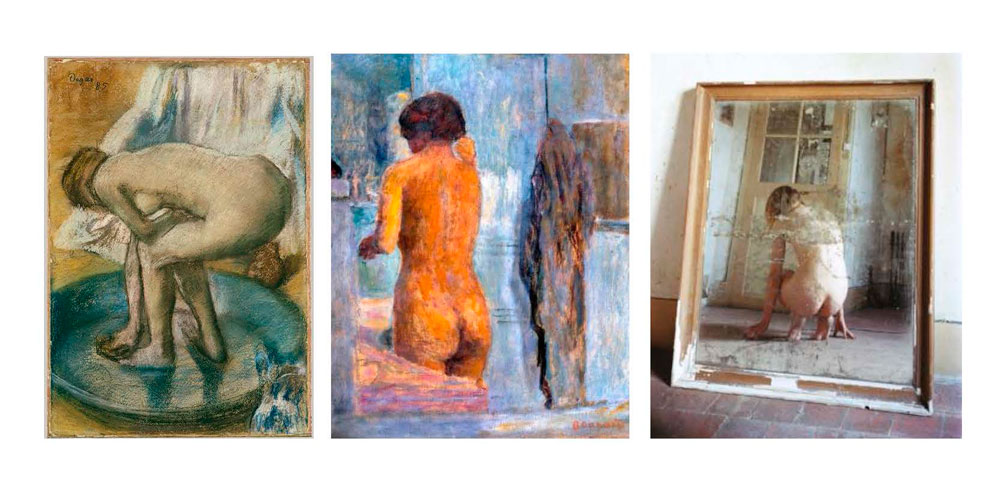
Left to right:
1. Degas, Woman Bathing in a Shallow tub, 1885
2. Bonnard, Bathing Woman seen from the back, c.1919
3. Brotherus Model Study 5, 2004
Exercise: Project 1 Autobiographical Self-Portraiture
Reflections: Brotherus’ self-portraits
Elina Brotherus (b.1972, Finland) lives and works in Paris and Helsinki. She works in still photography and video and much of her imagery explores perspectives and points of view. She often reflects on the relationship between the individual (frequently herself) and space either in domestic type settings or the wider natural landscape.
When I first saw Brotherus’ work it made me a little uncomfortable, maybe that was because the two images included in the course materials show her naked. It was more than her nakedness though; the images seem to me to have a mood that accentuates her exposure and vulnerability. On looking more at Model Study 5 I felt it had a familiarity, a very painterly quality that put me in mind of Bonnard and Degas, a softening of edges. It was interesting to read later that this was indeed part of the influence for her work.
There is no direct gaze to camera, it feels like a private moment I have intruded upon it could signify anything from giving way to an intense grief, (the curved body and dropped head) to the mundanity of a dropped contact lens. Whatever the moment she seems lost in her own thoughts and I feel I should not be there. I am however aware that this is a self-portrait and as such I assume Brotherus has had agency in selecting the pose she is using to represent herself.
I also find it interesting that the image is in some way mediated through a mirror. Although she is also not looking into the mirror, through the camera lens we are seeing a reflection of a reflection. For me this reinforces the privacy of the moment that sits in contradictoion to its public viewing.
In looking at the Model Studies as shot indoors there appears to be a narrative from clothed (also starting with her back to the camera) through nudity and back to clothed – in only one of the seven shots does she look towards the lens.
It all leaves me wondering what this moment is about, where is the camera and how has it been arranged so there is no reflection in the mirror, why has she chosen to be nude, is there a reason beyond references to impressionist/post-impressionist painting? It is posed and therefore I am assuming deliberateness, Ewing seems to suggest that the nudity is indeed symbolic.
I also wonder how many shots were taken before she chose this as part of the set.
…Brotherus isn’t really giving us a nude at all, but rather a self-portrait, a confession and admission of vulnerability rather than an image of titillation. W.A. Ewing





















